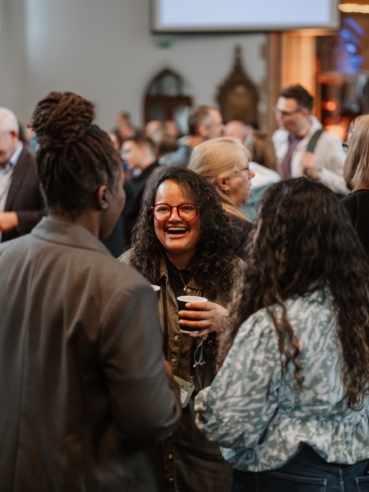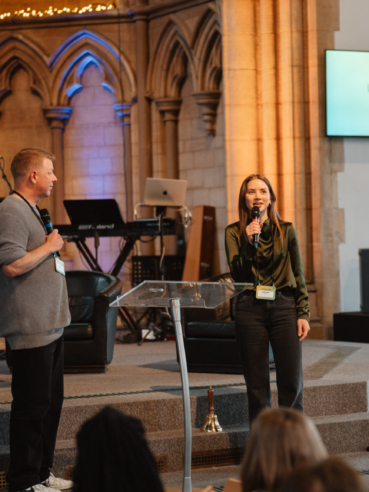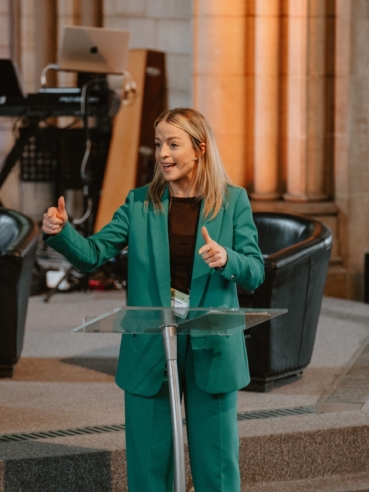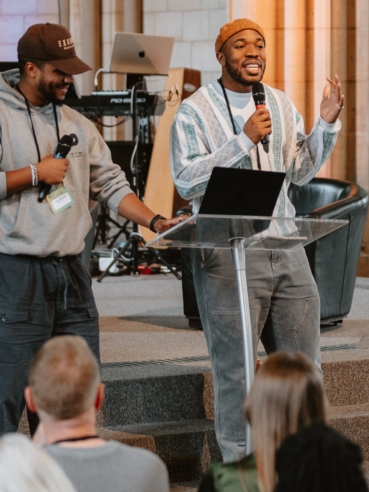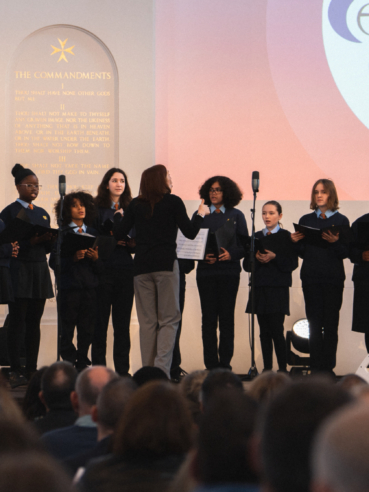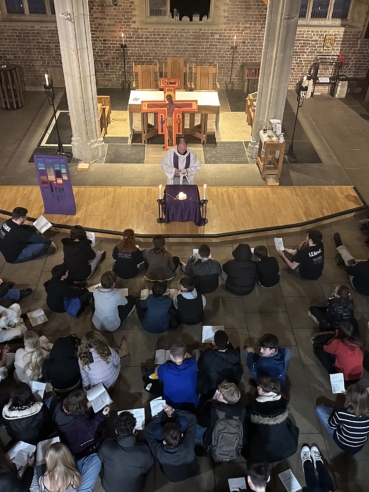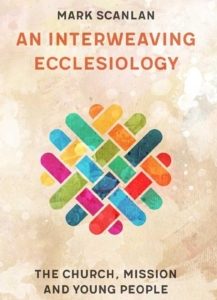 It was a Saturday. I was at a Christian youth group meeting in a local school, led by volunteers from different churches but not affiliated to any of them. It was part of Urban Saints and would soon celebrate its 100th anniversary. I was talking to a 16-year-old about why they attended, and looking around, the answer came quickly:
It was a Saturday. I was at a Christian youth group meeting in a local school, led by volunteers from different churches but not affiliated to any of them. It was part of Urban Saints and would soon celebrate its 100th anniversary. I was talking to a 16-year-old about why they attended, and looking around, the answer came quickly:
‘This has been my church for the last three years.’ (Scanlan, An Interweaving Ecclesiology, p. 127)
What does it mean for a non-church-based youth group to be seen by a teenager as their church? This wasn’t the group’s aim and it wasn’t trying to be a youth church or church plant.
Rowan Williams describes church as happening ‘when people encounter the risen Jesus and commit themselves to deepening and sustaining that encounter in their encounter with each other’. This idea is helpful when thinking about creating church with young people. It reminds us that the essence of church is not institutions or structures, but people encountering Jesus in the context of meeting with each other. Practical theologian Pete Ward explains:
The being of the Church is Jesus Christ and it is the freedom of the Spirit that brings about Christ’s presence… The love of Jesus is not contained within church meetings… [It] is there in the world and in the Church. It is the love of Jesus that makes the Church. (Pete Ward, Liquid Ecclesiology: the Gospel and the Church. Brill, 2017, pp 13 & 11)
In my concept of an interweaving ecclesiology the direction of logic shifts from starting with church, to creating spaces in which young people might encounter Jesus with each other, and then acknowledging the “churchiness” of such spaces. These become potential ecclesial spaces – gatherings in which church might happen as Jesus is encountered together. Places in which not only do young people move toward Jesus Christ, but also in which the church moves toward young people. This is vital because sometimes it is not young people who have left the church but rather the church which has drifted away from them. What does it mean for the church to be attentive to young people, to create spaces in which the beautiful, sacred lives of young people can be encountered?
It is not that formal structures of church are irrelevant. Through the Holy Spirit, and intentional relationship, potential ecclesial spaces are part of the whole body of Christ. This vision moves away from seeing any single gathering, congregation, or encounter as fully church. Rather the church is, to quote a leader from my research, ‘an interweaving thing’ (Scanlan, An Interweaving Ecclesiology, p. 103). We see the church more fully in the vista formed by multiple ways and places in which people encounter Jesus together. This is vital for young people to find ways into the community of God’s people, but also for the Church continuing to encounter Jesus, acknowledging that we are always learning how to be the Church, needing to be drawn into deeper encounter with Christ.
It is then possible for the church to be found beyond its own edges, or to perceive the church as effectively edgeless due to the work of the Spirit in the world. It is not just young people that open this vision of the Church. Catholic theologian Clare Watkins describes something similar, in which the ‘edgelessness of church’ is such because the church is ‘continuously stretched into the Spirit’s presence in the world’.
This dynamic is especially pertinent for young people, however, as they are wired toward cultural experimentation and identity formation in relation to the key cultural dynamics in any given time and place. The potential ecclesial spaces created through work with them allow the church to remain open at the edges to new encounters with Jesus Christ. As I write:
This creative edge of church life can help the Church as a whole hold on to its missional calling to faithfully follow the Spirit of God into the world… This gift from youth ministry is a call for the Church to be true to its own calling to participate in the life of God… to be continuously weaving the beautiful tapestry of ecclesial life in and for the world. (Scanlan, Interweaving Ecclesiology, p. 246)
It is toward this vision of a church drawn to find ways of encountering Jesus together with young people, so both might be transformed in the encounter, that the youth and children’s ministry training at St Mellitus is geared, but more importantly it is toward this vision that I commend all who seek to faithfully proclaim the gospel among future generations.
Mark Scanlan is Lead Youth Ministry Tutor at St Mellitus College, heading up the new ‘Future Generations’ training in partnership with the Church of England’s 30K Project.
This training programme offers bursaries to cover academic fees so those in CofE contexts can study for a two-year Diploma in Higher Education with a children’s or youth ministry focus for free.
Mark is the author of An Interweaving Ecclesiology: the Church, Mission and Young People published by SCM Press. It’s available here or from all usual booksellers.
This article was printed in Multiply 2024: The Manual, a publication that accompanied the programme of Multiply 2024, which explored multiplying a younger church. You can find related content below.


 It was a Saturday. I was at a Christian youth group meeting in a local school, led by volunteers from different churches but not affiliated to any of them.
It was a Saturday. I was at a Christian youth group meeting in a local school, led by volunteers from different churches but not affiliated to any of them.
